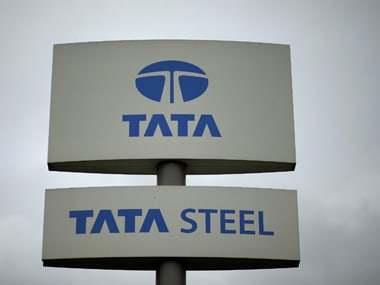For a banking sector that has suffered back-to-back bad news for a while now, Tata Steel’s acquisition of Bhushan Steel offers a ray of hope. On Friday, Tata Steel’s wholly-owned subsidiary Bamnipal Steel Ltd (BNPL) announced the completion of its acquisition of Bhushan Steel, marking the resolution of the first case under the Insolvency and Bankruptcy Code (IBC), 2016. This was among the first lot of 12 companies that the Reserve Bank of India (RBI) had pushed to the National Company Law Tribunal (NCLT) for bankruptcy proceedings last year. The most important outcome of the deal is that banks will pocket Rs 35,200 crore immediately, which covers most of the principal amount Bhushan Steel owes to its lenders, besides a 12 percent stake in the company. The cash payment immediately lessens the burden on a group of banks including fraud-hit Punjab National Bank (PNB).
Most importantly, this resolution gives a hope to the banking sector, neck-deep in bad loans, that a recovery of money is actually possible when via the IBC route. This is crucial for the sector that is sitting on gross NPAs worth Rs 9 lakh crore and a good chunk of wilful defaults.
Remember, Rs 9 lakh crore is a conservative figure. According to former RBI deputy governor K C Chakrabarty, the total chunk of all problematic loans in the banking system would be around Rs 20 lakh crore. In the first round, RBI referred 12 cases to the IBC totaling about 25 percent of the gross NPAs in the banking system. According to banking industry sources, 28 more accounts were referred to the IBC. In most of these cases, the process is underway. The RBI’s all-out war against NPAs began in January 2015 when the central bank put out rules for the early recognition of stressed assets in the banking system and their punitive provisioning. Till then, public sector banks (PSBs), which account for 70 percent of our banking system and almost 90 percent of bank NPAs, were happily ever-greening bad loans of influential, politically connected promoters via technical adjustments. The infamous corporate-political nexus worked in full swing. [caption id=“attachment_4065655” align=“alignleft” width=“380”]  Tata Steel logo. Representational image. Reuters.[/caption] Banks’ loan recovery record has been extremely poor. To understand the gravity of the situation, one must look at the State Bank of India (SBI)’s track record. In fiscal 2015 alone, SBI wrote-off loans worth Rs 23,973 crore while it recovered just Rs 317 crore. In the following fiscal year, it wrote off Rs 19,944 crore, whereas it recovered Rs 3093 crore from loans that were written off. In FY17, SBI wrote off loans worth Rs 27,574 crore and recovered Rs 3,765 crore. In the subsequent fiscal year till December 2017, it wrote off Rs 31, 096 crore and recovered a mere Rs 3,221 crore. To be more specific, over a roughly three-and-a-half year period, from when Narendra Modi took charge as Prime Minister in mid-2014 to the end-December 2017, India’s public sector banks (PSBs) have written-off loans worth Rs 2,72,558 crore. Of the amount, a meagre Rs 29,343 crore has been recovered, according to data available with the central bank. Of the write-offs, the biggest in a year happened at the Mumbai-traded SBI, which wrote off Rs 31,096 crore in the nine months to 31 December, 2017. PSBs recovered a total of Rs 15,786 crore over a twenty-one month period ended 31 December 2017 (the first nine months of FY18 and all of FY17 put together). This data was submitted by the Minister of State, Finance, Shiv Pratap Shukla, on 27 March, 2018, in Parliament. Even after the IBC was put in place, there have been certain concerns on the IBC. On IBC, the big question that has been repeatedly asked is whether there will be enough buyers for distressed assets. A maximum of 270 days are given for the company to work out a turn-around mechanism and repay it’s loans. If the resolution doesn’t work, the liquidation proceedings kick-in and banks and other stakeholders in the firm work out a plan to recover the money. The whole process is time bound and offers a decent exit for the promoter and minimum financial losses to lenders. But, the problem is that banks are not experts in businesses to which they lend. Unless the right professionals are involved, a resolution within nine months may not be a workable idea and can trigger bigger disputes. The other question being asked is whether the NCLT, the body which deals with IBC cases, have adequate infrastructure to deal with a large number of insolvency cases? Right now, there are about 25,000 pending cases with the NCLT according to Alvarez & Marsal. If the the NCLT doesn’t have enough manpower and institutional infrastructure to deal with these cases, hopes of faster resolution of NPA cases may not be realistic. A company is pushed for liquidation after severe financial stress. Hence, in many of the insolvency cases, banks may have to assume substantial losses. In the case of PSBs, which are the major bad loan victims of India’s banking sector, the onus of recapitalisation falls on the majority stakeholder in these banks — the government. Can the government fork out significant amounts of money to compensate the losses of state-run banks? That is doubtful. Already, there are estimates that the government will have to fork out much more than the promised Rs 2.11 lakh crore to fill the void. Despite all these concerns, the banking sector has been carrying high hopes on the IBC mechanism as the last remaining avenue for recovery of funds. Tata Steel’s buyout of Bhushan Steel will fuel those hopes for a while. (Some parts of this piece were published earlier on Firstpost and have been updated in the backdrop of Tata Steel-Bhushan Steel deal)


)
)
)
)
)
)
)
)
)



